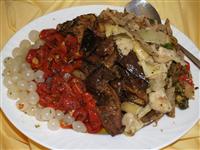 This course deals with the management of foods to optimize health as well as covering different ways of eating, food toxicity, and detoxification. Can stand alone as well as building on Nutrition I and II.
This course deals with the management of foods to optimize health as well as covering different ways of eating, food toxicity, and detoxification. Can stand alone as well as building on Nutrition I and II.
Some people seem to be able to eat anything, without suffering any signs of ill health. They always appear fit, never get sick, don't get over weight, and they still eat junk food and other things which others simply cannot tolerate. The healthy body has a remarkable ability to process and eliminate unwanted chemicals. If a person is in peak condition, any excesses or unwanted components of food, are likely to be eliminated through the urinary or excretory system, or even through sweat. Very few people, however, are in such a good state of health; and even those who are, are unlikely to continue disposing of unwelcome chemical compounds year after year for their entire lifespan. Sooner or later their ability to tolerate undesirable foods will decrease, and problems will develop.